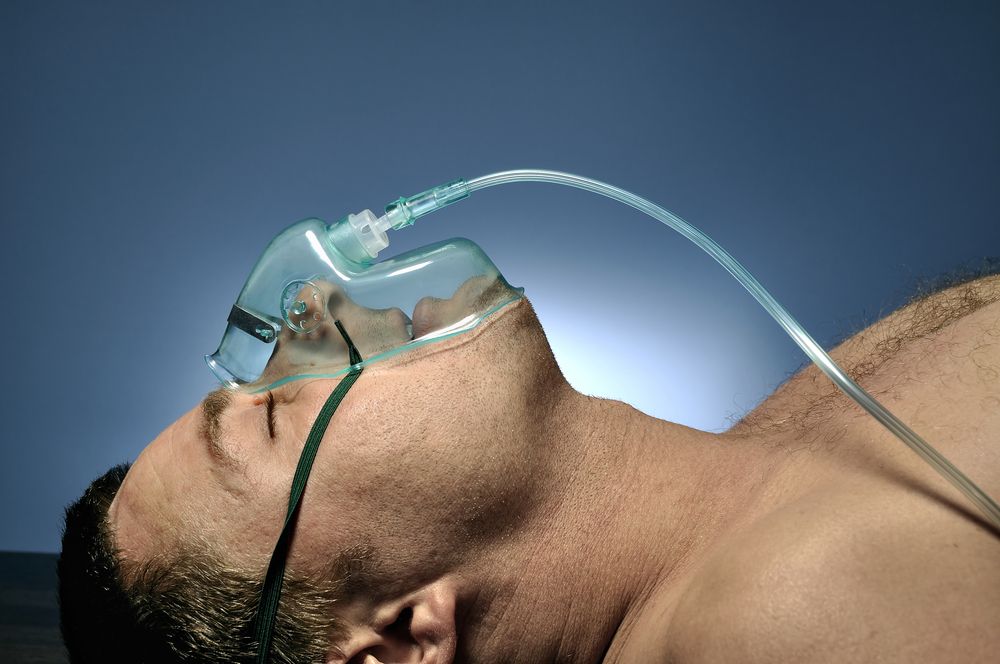Rare Anesthetic May Help Treat PTSD, Rat Study Suggests

Breathing in xenon, a gas used in people for anesthesia, may help treat post-traumatic stress disorder and other conditions linked with fear and anxiety, a new study in rats suggests.
Xenon's name is derived from the Greek word for "stranger" because it's so rare. Like helium and neon, xenon is a so-called noble gas, one that reacts chemically with other elements only rarely at best. In the late 1930s, the U.S. Navy investigated which gases might be best to breathe during deep-sea dives to prevent medical problems, and found that xenon could have anesthetic effects. Although xenon has been tested in people and experts say may even have advantages over other anesthetics, it is not yet widely used for anesthesia, partly because its rarity makes it expensive.
Now, scientists are learning that xenon could also interfere with memory reconsolidation, a process in which previously stored memories get restored and strengthened, weakened, or altered each time they are recalled. [10 Things You Didn't Know About the Brain]
In a new study, researchers trained rats to be afraid of sounds that were paired with painful electrical shocks to their feet. One day later, the scientists exposed the rats to the same sounds and, to measure their fear level, video-recorded how long they froze in place. Some of these rats were given a dose of xenon, and others were not.
The investigators found that a single hourlong dose of xenon was enough to reduce rats' fear responses, and the effects remained for up to two weeks, study co-other Edward Meloni, an assistant professor of psychiatry at Harvard Medical School, said in a statement. "It was as though the animals no longer remembered to be afraid of those cues," Meloni said.
If future research shows that xenon has the same effects on people's fearful memories, it could potentially be used to treat people with post-traumatic stress disorder (PTSD), the researchers said.
"The fact that we were able to inhibit remembering of a traumatic memory with xenon is very promising because it is currently used in humans for other purposes, and thus it could be repurposed to treat PTSD," said Marc Kaufman, an associate professor of psychiatry at Harvard and a co-author of the study.
Sign up for the Live Science daily newsletter now
Get the world’s most fascinating discoveries delivered straight to your inbox.
How does xenon work?
Scientists believe xenon induces anesthesia by blocking a molecule in the brain known as the NMDA receptor.
"Many studies have shown that xenon sits in a particular pocket of the NMDA receptor called the glycine binding site," Meloni said. "Glycine, a naturally occurring chemical in the brain, usually occupies that spot in the NMDA receptor and helps change the configuration of the NMDA receptor so that it works to activate neurons. Xenon, because it enters the brain and sits in that spot, prevents glycine from doing its job and thus prevents the NMDA receptor from working."
The NMDA receptor also plays a role in memory reconsolidation, scientists have found. Therefore, blocking the NMDA receptor may interfere with memory reconsolidation and potentially help people with PTSD who have intrusive and traumatic memories, the researchers said.
"We know from previous research that each time an emotional memory is recalled, the brain actually restores it as if it were a new memory," Meloni said. "With this knowledge, we decided to see whether we could alter the process by introducing xenon gas immediately after a fear memory was reactivated." [Why You Forget: 5 Strange Facts About Memory]
In the study, the researchers had to carefully calculate the right concentration of xenon and other gases the animals breathed inside an airtight chamber. "Working with a gas is extremely hard," Meloni told Live Science. "Unlike people, we can't get the rats to wear tiny little gas masks."
A new treatment for PTSD?
Studies have found several chemicals that can interfere with the reconsolidation of memories in animals. However, these chemicals have often not proven suitable for human use — for instance, they can be toxic or induce other unwanted side effects. In contrast, scientists have used xenon safely for decades.
In addition, "xenon gets in and out of the brain very quickly," making it a suitable option for using in therapy, Meloni said.
"The most exciting aspect of these results is the speed of the impairment effect — supercool," Karim Nader, a neuroscientist at McGill University who did not take part in this research. In contrast, the drug propranolol, which is currently in clinical trials to treat PTSD, takes longer to work.
However, propranolol can block the reconsolidation of the emotional part of a memory, leaving other parts of the memory unaffected, Nader said. "It is not clear whether xenon has specificity in the same way as propranolol," Nader told Live Science.
If future research shows that xenon can also only impair the emotional parts of memories, "this might be optimal as a therapy," Nader said.
Xenon "will not be a treatment that will cause blanket memory erasure and a way to 'zombify' psychiatric patients," Meloni suggested.
"We won't know until we try it in humans, but my speculation is that xenon will diminish a memory enough to allow the brain's own coping mechanisms, perhaps with the help of further psychotherapy, to break a vicious cycle of traumatic remembrance — flashbacks, nightmares, discomfort at being confronted by trauma cues," he added. "I think it will be a way to reduce some of the emotional pain associated with trauma and perhaps provide some relief."
The scientists detailed their findings online Aug. 27 in the journal PLOS ONE.
Follow us @livescience, Facebook & Google+. Original article on Live Science.











